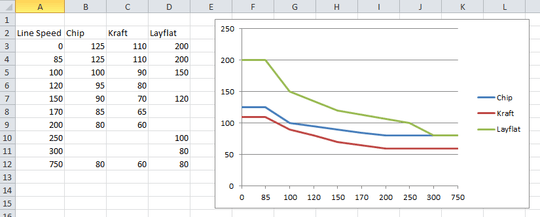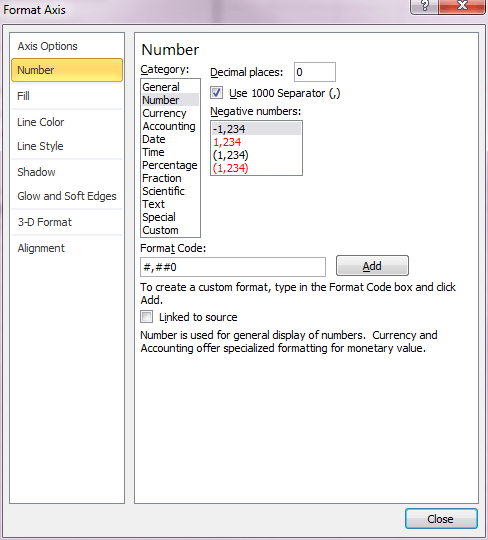You've discovered a subtle, but important difference in how Excel charts data. Generally, Line charts treat their horizontal (X) axis as categorical data, while Scatter (XY) charts treat theirs as numeric data. The result being, as you've discovered, that Line charts don't have the expected intervals on their axis when using numeric values on the horizontal axis.
There are two ways to address this shortcoming. The most efficient is to use a Scatter chart with lines connecting your points. This gives the appearance of a Line chart with the convenience of the values appearing at the correct intervals.
However, there are times when you may want to use a Line chart (e.g. your horizontal axis are dates and you want to use the built in aggregation for major and minor units to days/weeks/months). In this case, you'll need to add values to your horizontal (X) axis values, with no corresponding Y values (i.e. use =NA() for the "blanks", and Excel won't plot the values). Excel will provide an axis point for each value, it just won't be plotted.
EDIT: The same Chart can be created in either type, just with a differing amount of input data. Here's an example:

Neither of these solutions is the "correct" choice, but rather tools which give you flexibility to display your data as intended (once you get comfortable with the differences).
EDIT: Also, FWIW, your chart doesn't change values past Line Speed of 300. Unless you have a specific business reason to extend out to 750, it's worth considering shortening the horizontal axis to 300, and allowing the differences to be emphasized.









Are you using a line graph, or a xy-scatter plot (the correct choice?) – ja72 – 2013-10-29T19:53:48.807